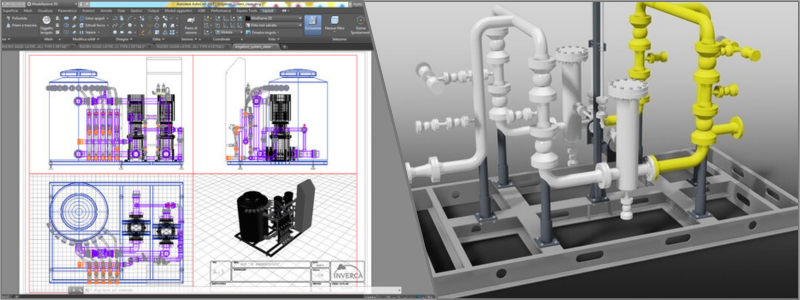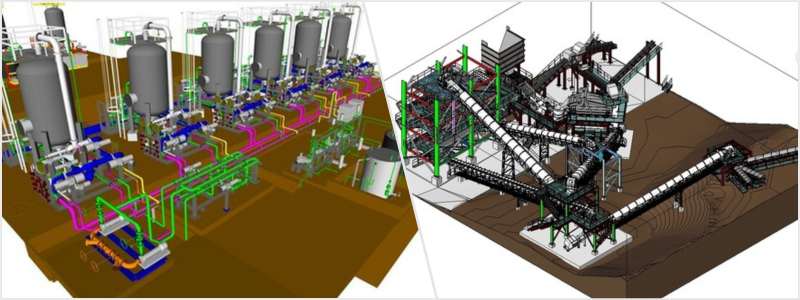Large-scale construction projects, mining, offshore drilling, manufacturing processes, wastewater treatments, and even recycling plant activities generate a range of byproducts, including hazardous chemicals and solid waste that may harm the environment.
An ecological approach to industrial operations is necessary to mitigate the negative impact of those byproducts on the ecosystem and improves workers’ safety. Since the process should not impede the business operation, an environmental engineer must plan for an effective solution.
An environmental engineer (or consulting environmental engineer) lends expertise to prevent or control worksite hazards. As a subspecialty field of civil engineering, professionals are expected to tackle ecological issues in industrial operations.
They work with private employers, government, and nonprofit organizations to help remediate environmental problems, including but not limited to waste disposals, air pollution, groundwater contamination, and erosion. As part of the job, they also prepare reports and compliance submittals. The primary objective is to protect the environment.
 Table of Contents
Table of Contents
Cost
According to the U.S. Bureau of Labor Statistics (BLS), the median annual salary for environmental engineers is $96,820 (as of May 2021, latest available data). Experienced environmental engineers earn more than $153,200 annually. At the lower end of the spectrum, they make less than $59,820. The top industries where they work are as follows:
| Industries | Annual Wage |
| Federal government (except for postal services) | $110,240 |
| Local government (except hospitals and education) | $82,520 |
| State government (except hospitals and education) | $80,450 |
| Consulting services | $94,970 |
| Engineering services | $95,730 |
Most environmental engineers work full time, 40 hours a week. Some environmental engineering firms work with project planners and provide their services from an office. In other words, they are not involved in the day-to-day operation of the project itself. When working with environmental scientists as part of a hazard removal team, they must be on-site to provide supervisory roles.
RELATED: Civil Engineering Services Rates, Budget Breakdown & Costs for Companies

Hourly rate
Based on the BLS data, environmental engineers make an average of $46.55 per hour. The top 10 percent may charge $73.65 per hour or more, whereas the lowest 10 percent may ask for around $28.76 per hour. The exact rate always depends on project requirements, scale, and difficulties.
Per project rate
Environmental engineers rarely opt for per-project pricing due to the possibility of the unknowns. If a company wants to hire them with the pricing structure, they will ask for a detailed project brief to understand everything included in the price.
The contract functions as a protection against unpaid overtime duties or additional work. With a clearly defined and itemized range of services, the environmental engineer may submit a separate invoice or quotation for duties unspecified in the contract. Employers should understand that per-project pricing tends to be more expensive than hourly rate structure.
Under the assumption that environmental engineers agree to work under the payment method, they will calculate the price based on the hourly rate with a markup. The job description in the contract and project brief should clearly show how long it takes to complete every task. The total amount of work hours is then multiplied by the hourly rate. They will add 15% to 20% as a contingency for unexpected duties, like follow-up meetings or revisions.
For example, if an environmental engineer charges $50 per hour, and their task takes 120 hours or three weeks. In an hourly rate structure, the employer is expected to pay the engineer $6,000. However, an extra 20% might be added for a $7,200 pricing estimate in a per-project pricing structure.
An alternative to a fixed per-project fee is to add a clause stating the possibility of renegotiation or charging an hourly rate for any performed duty outside the scope of the pre-determined job description.
What does environmental engineering involve?
The vast majority of environmental engineering firms work to ensure compliance with and enforce government regulations concerning environmental protection. The main regulatory body tasked with the matters in the United States is the Environment Protection Agency (EPA), Environment and Climate Change Canada (ECCC) in Canada, Environment Agency (EA) in the United Kingdom, and European Environment Agency (EEA) in the European Union. Other countries and regions have their equivalent authoritative agencies.
Environmental engineers devise a method to comply with the regulations while considering the efficiency of the project in question. They apply the principles of the discipline (encompassing biology, microbiology, chemistry, geology, hydrology, hydraulics, and mathematics) to develop solutions that will protect and improve the ecosystem affected by the project. The most common issues to address are waste disposal, pollution control, recycling, wastewater management, and public health.
Some of the typical duties of environmental engineers are as follows:
- Inspect project sites or industrial facilities to ensure compliance with environmental regulations
- Prepare and submit environment investigation reports
- Provide technical support for hazardous material removal tasks
- Monitor environmental programs for progress
- Help design projects from the perspective of environmental protection
Environmental engineering consulting firms offer a range of services, from planning a project to assisting the operations of industrial facilities to avoid environmental compliance issues. In most projects, the work revolves around hazardous-waste management. They evaluate every possible hazard or disturbance to the ecosystem resulting from the project and advise on remediating the impacts.
Some environmental engineers collaborate with scientists from related fields to study the effects of ozone depletion, climate change, greenhouse gases, and acid rain. They also work with hazardous-waste removal professionals, urban planners, architects, and lawyers to promote environmental sustainability in industrial or commercial operations and human activity.
In an Environmental Impact Assessment (EIA), the engineers analyze any potential environmental consequences of a planned project, policy, or program. They will propose changes if the damages exceed the project owners’ mitigating abilities. When working for the government, they take part in developing environmental protection regulations.
RELATED: Sustainable product design and product development principles for firms to consider
Finding the right environmental engineering firm or consultant
Just because an environmental engineering firm offers the least expensive proposal, it does not necessarily mean a cost-effective solution. Although hazard management and remediation might not directly affect productivity, a healthy and safe worksite that generates zero environmental contamination is a hardly negotiable requirement.
There isn’t (shouldn’t be) any workaround for protecting the ecosystem. Knowledge base and experience come first. Few things to keep in mind when searching for an environmental engineering firm partner:

Specialties
A reputable environmental engineering firm will not hesitate to provide references or a list of longstanding clients and project track records. Look at the website for information about the range of services and the environmental engineering firm’s specialties.
For example, suppose your project has issues with soil investigation and groundwater contamination. In that case, it is recommended to partner with an environmental engineer with a good history of dealing with the same problems. Since the government regulates contamination issues, you want to work with environmental engineers who know what they’re doing.
Regulations know-how
There are two ways to tell if an environmental engineering firm has the expertise to interpret regulations. First, only some codes are written in an easy-to-understand language, and the firm must understand that you will need guidance through potentially numerous chapters and clauses in the book. Second, working with an environmental engineering firm that has developed an excellent professional relationship with the appropriate regulatory agencies is beneficial. A good relationship with regulatory agencies proves your partner knows how to communicate the issues well with the regulatory bodies.
The government regulates local, state, and federal environmental protection. There can be hundreds of clauses for specific issues but with broad ramifications affecting seemingly unrelated aspects of the project.
Versatile staff
Ideally, an excellent environmental engineering firm has enough engineers and technicians to handle many tasks within the scope of work. It is a team of versatile staff with broad (combined) specializations to help you deal with unexpected issues that may arise during the project. Since the firm acts as a partner, it should perform various services, from environmental assessment, compliance submittals, supervisory roles, hazardous area or materials treatment, and remedial system design.
Track Records
Positive track records are mandatory; looking for OSHA recordable and reportable incidents associated with the environmental engineering firm is wise. Most firms only highlight the positive track records in the portfolio and put the adverse events elsewhere. Do your research to determine whether the firm has been cited for such incidents; the last thing you need is to be held liable for work-related injuries and accidents.
Generally, it’s critical to value experience and good track records over low-cost proposals. Please do your due diligence to ensure the environmental engineering firm has all the necessary licenses to practice its services and knowledgeable staff who understand all the applicable regulations.
RELATED: 7 steps of the engineering design process used by freelance engineers & companies
The bottom line
To navigate the complexities of environmental engineering, having the right expertise on your side is essential. Partnering with a skilled freelance engineer can make all the difference in achieving sustainable, compliant, and cost-effective solutions.
How does your company stand out in the industry? Investing in expert environmental engineering services can set you apart from competitors and ensure your projects are ecologically responsible and economically viable.
How Cad Crowd can assist
Cad Crowd connects you with top-tier environmental engineers, offering a wide range of services tailored to your company’s needs. Discover how our platform can help streamline your environmental engineering projects. Request a free quote and start working with us today to elevate your company’s commitment to sustainability.
